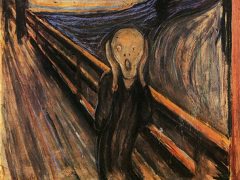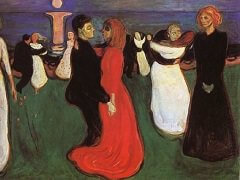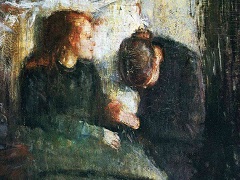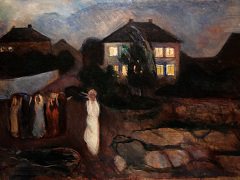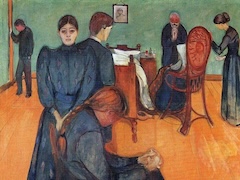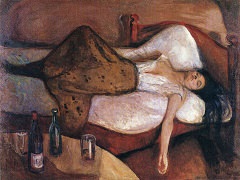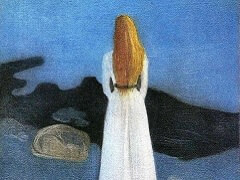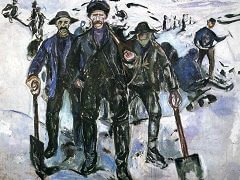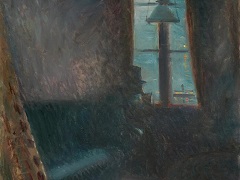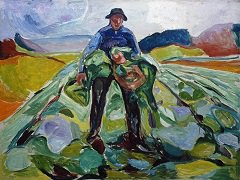The Death of Marat, 1907 by Edvard Munch
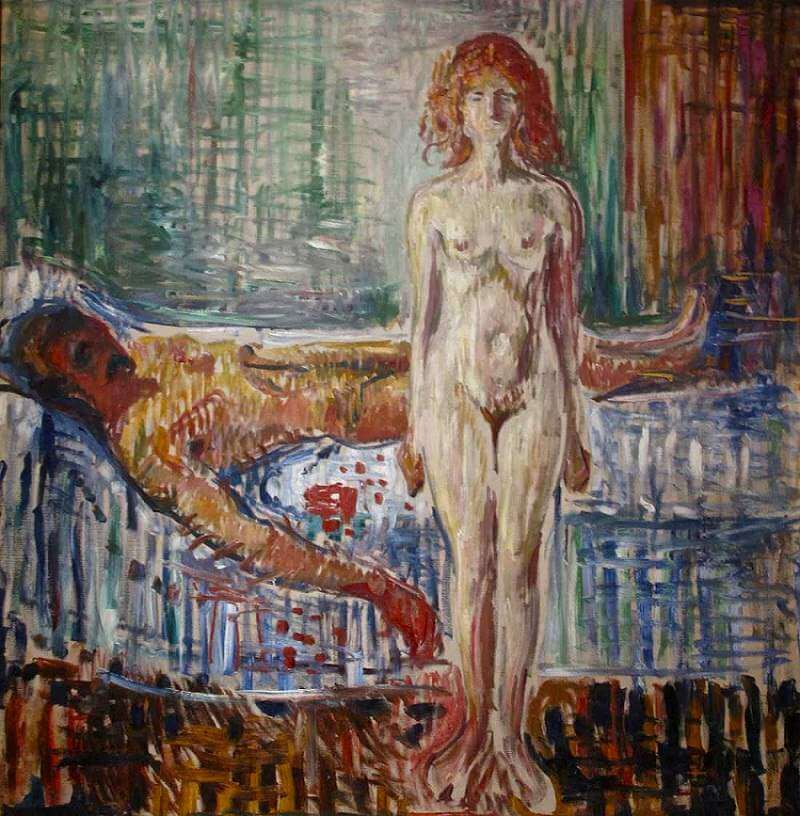
Despite his new confidence in masculinity, the injury he had suffered in the Tulla Larsen denouement and the alleged persecution at the hands of her 'cabal' of his former friends prolonged Munch's consciousness of female perfidy, leading him to contrive two different compositions entitled The Death of Marat. The story of Marat's murder by Charlotte Corday bears only the remotest resemblance to that of Munch and Tulla Larsen but evidently it was enough for Munch's symbol-stretching mind. The idea may have been suggested by David's famous painting which, like the present picture, is based on a severely classical design of horizontals and verticals parallel to the picture plane. A nude Munch lying on a bed, blood dripping from his wounded hand, is substituted for Marat dying in his bath, and a nude Tulla, an erect frontal figure with her accomplished deed behind her, for the upright packing-case in David's picture.
The entire surface of the painting is covered with long, heavy stripes of paint in variegated colors with white interstices, arranged vertically and horizontally, in places cross-hatched, just as the composition as a whole is dominated by crossed vertical and horizontal figures.
Munch had previously used rather similar elongated stripes in woodcuts, and shorter parallel strokes of paint in some earlier pictures. Here they create an extremely agitated, atmospheric effect, conceivably a reflection of the artist's disturbed mental state; he painted in this manner especially in 1907, shortly before his breakdown, and now and then, in a less extreme form, for the next few years, during and after his stay in the Copenhagen clinic.
Munch later made some interesting comments on this style. He recognized, rightly, that it represented a break-up of art nouveau continuous contours and the synthetist reduction to a plane; he 'had the urge to break areas and lines,' as he put it, an urge already apparent in the tensions of Loving Couples in the Park. He also thought of it as a kind of proto-cubism, but here I believe he was mistaken. Destroying subjective fusion in his case, as in that of his Danish contemporary Willumsen, made possible a return to greater objectivity and realism. Cubism, on the other hand, was a step in the opposite direction, from subjective organic continuity, based on nature, to equally subjective inorganic articulation, largly discarding nature.

